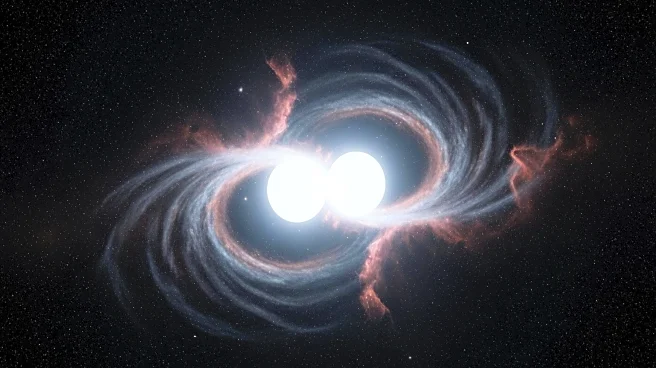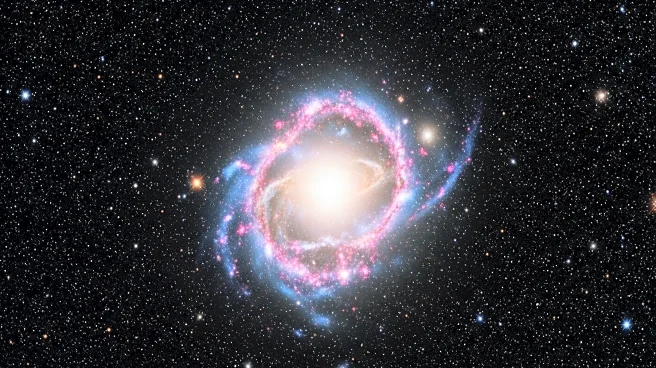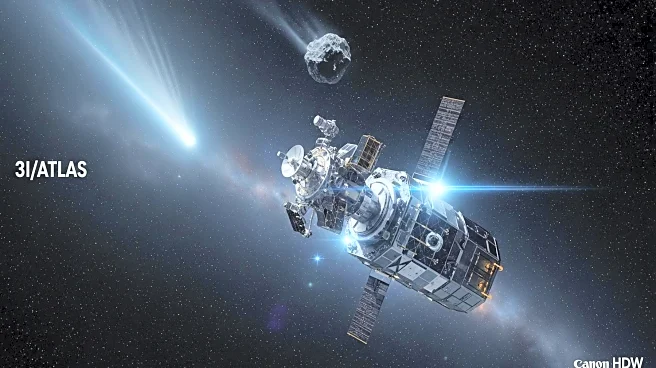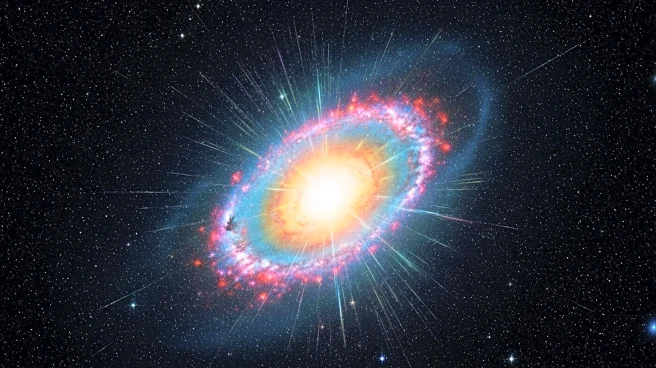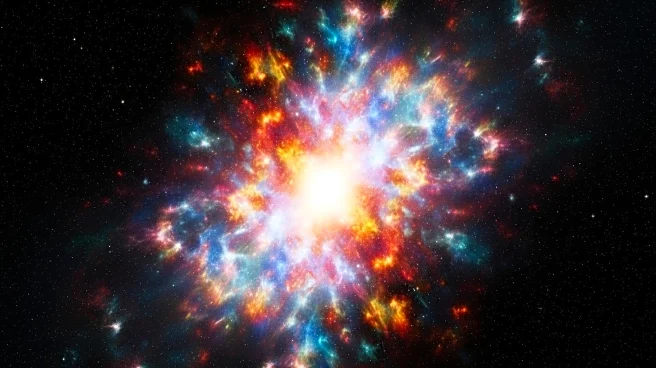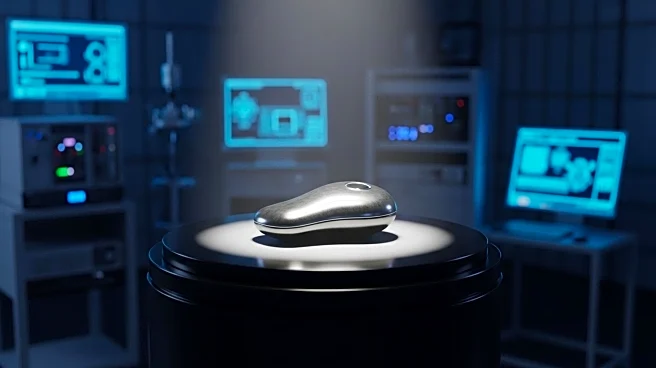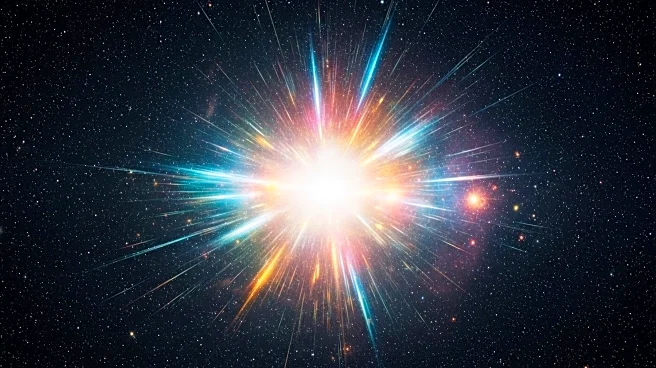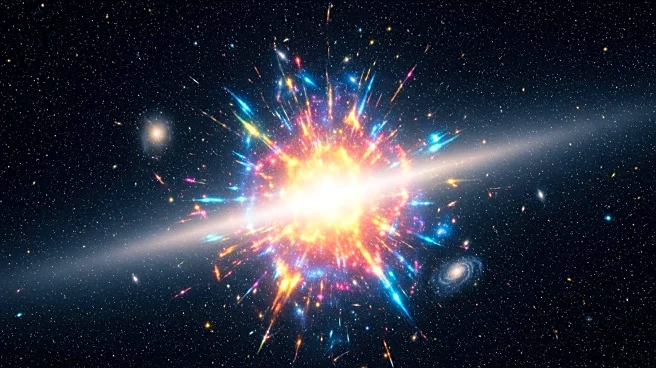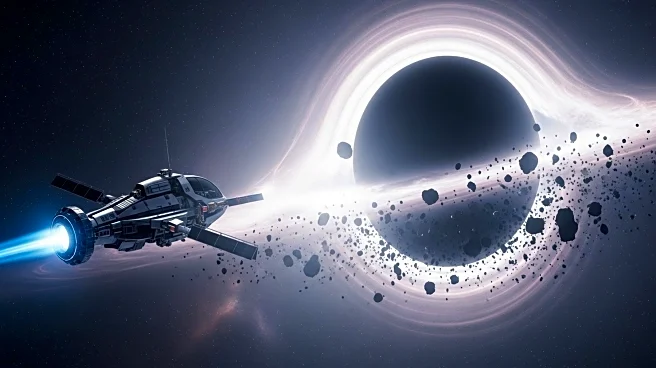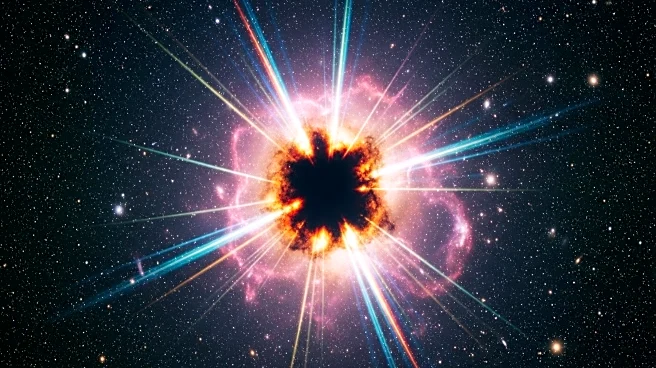What's Happening?
NASA's Hubble Space Telescope has identified an ultra-massive white dwarf star, WD 0525+526, resulting from the merger of two stars. This discovery challenges previous assumptions about white dwarf formation, suggesting that such mergers may be more common than previously thought. The star, located 128 light-years away, is 20% more massive than the Sun and exhibits unusual carbon presence in its atmosphere, indicating a violent origin. The findings, published in Nature Astronomy, highlight the role of ultraviolet observations in revealing the star's unique history.
Why It's Important?
The discovery of WD 0525+526 provides new insights into the formation of white dwarfs and the potential prevalence of stellar mergers. Understanding these processes is crucial for refining models of stellar evolution and predicting supernova pathways. The presence of carbon in the star's atmosphere suggests a more complex formation history, which could impact theories on the lifecycle of stars and the dynamics of binary systems. This research underscores the importance of advanced observational techniques in uncovering hidden aspects of cosmic phenomena.
What's Next?
Researchers plan to extend their study to explore the prevalence of carbon-rich white dwarfs among similar stars, aiming to identify more merger remnants. This could enhance understanding of white dwarf binaries and their role in supernova explosions. The findings may lead to further investigations using ultraviolet spectroscopy to detect hidden mergers, potentially reshaping theories on stellar evolution and the mechanisms behind supernovae.
